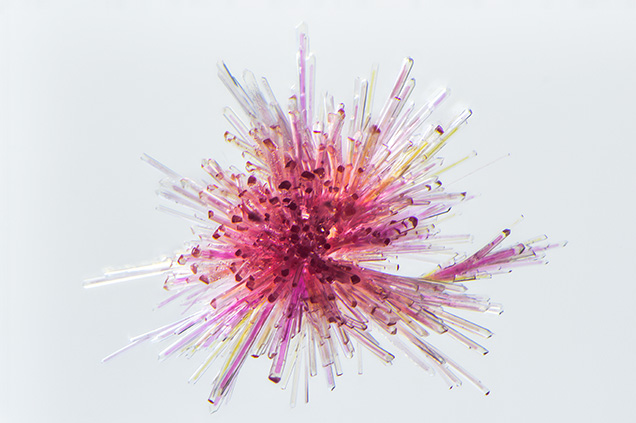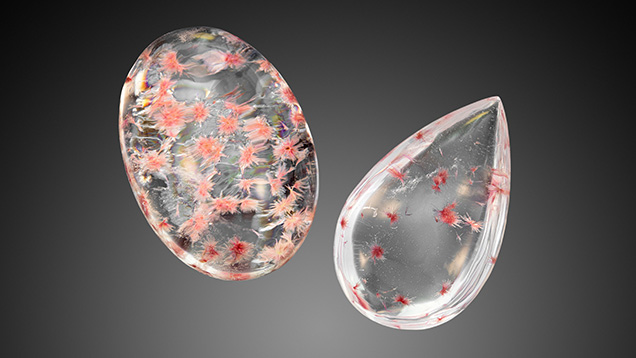Pink and Red Epidote in Quartz

We recently discovered very photogenic clusters of hot pink to red crystals as “firework” sprays (figure 1) in two transparent cabochons of rock crystal quartz. The cabochons weighed 5.47 ct and 11.18 ct and measured 15.85 × 9.87 × 5.92 mm and 16.06 × 11.49 × 7.83 mm, respectively (figure 2). These cabochons, which came from Sara Crystal in Shanghai, are thought to be from Chenzhou in China’s Hunan Province.

After performing gemological testing and optical microscopy, we thought the inclusions might be piemontite based on their behavior in polarized light and the monoclinic morphology of the individual terminated crystals. Because some of the pink crystals reached the surface of their polished hosts, we decided to analyze them using Raman microanalysis. The result was a close match for epidote, which was surprising since epidote is normally thought of as a dark brownish green mineral.
The results of chemical analysis using laser ablation–inductively coupled plasma–mass spectrometry were consistent with epidote, but with one additional element present: manganese, which caused the pink to red color in these microcrystals. We concluded that the inclusions were indeed epidote instead of piemontite, but pink to red epidote was something completely new to us.
Searching the literature for piemontite and epidote uncovered the following statement from Mindat.org, which seemed to explain the existence of these pink to red epidotes:
“Piemontite” has two different uses: Piemontite (sensu stricto) is the mineral species described here, but more commonly “piemontite” refers incorrectly to deep red colored, -bearing epidotes that are really varieties of the species epidote, and not strictly speaking piemontite. “Piemontites” rarely contain more than 40% of the piemontite molecule, so many “piemontites” in collections (and pictured here in Mindat) are really Mn-rich red varieties of epidote.
To our knowledge, this pink to red epidote-quartz inclusion-host association has not previously been reported.



